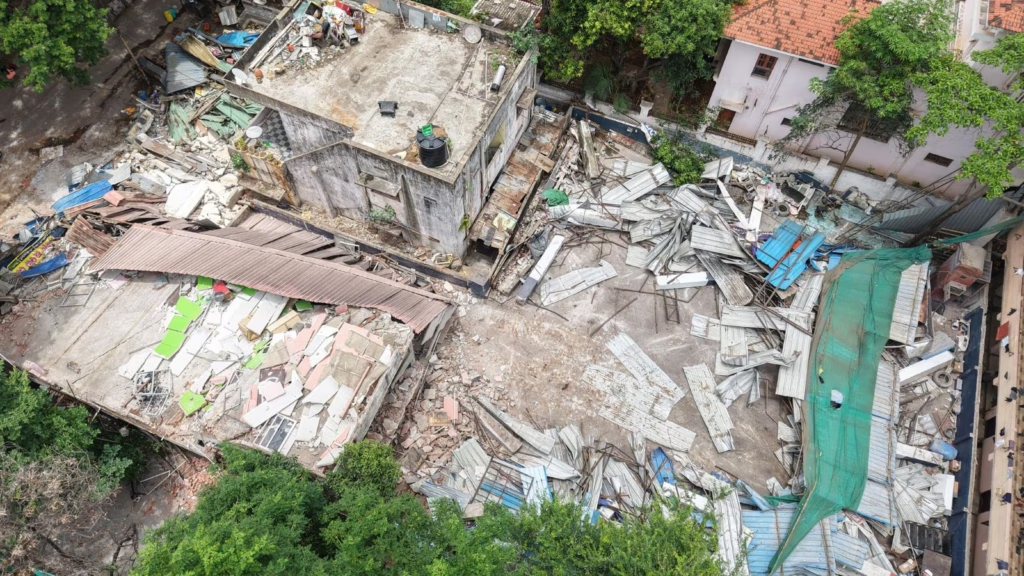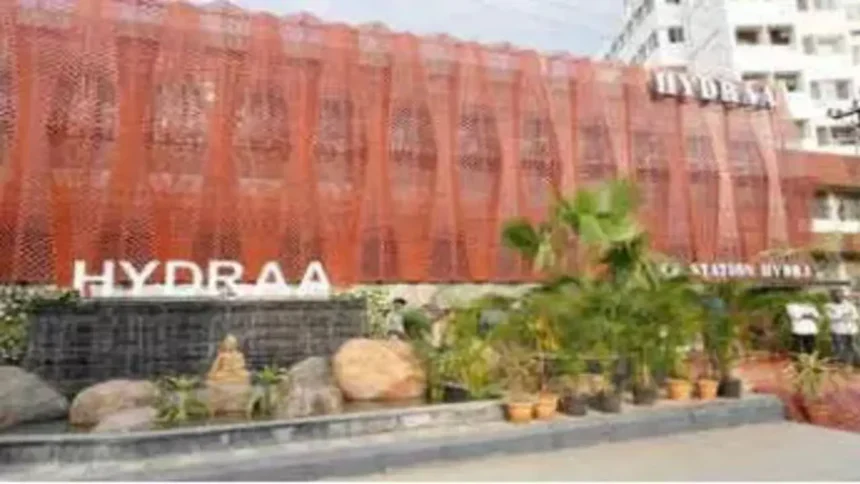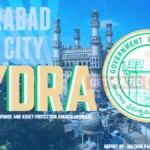HYDRAA Land Recovery Hyderabad :At sunrise, Chandanagar often hums with the buzz of school vans, the aroma of dosa stalls, and joggers tracing familiar routes along narrow footpaths. But on one seemingly ordinary morning, this quiet Hyderabad suburb became the stage for a major reclamation — not just of land, but of dignity, purpose, and public trust.
What had long been whispered in frustration by local residents was finally confronted head-on by an agency many hadn’t even heard of until recently: HYDRAA — the Hyderabad District Revenue and Anti-Encroachment Authority. In the early hours of the day, backed by officials, documentation, and an unwavering will, HYDRAA rolled into Chandanagar with a singular mission — to take back what rightfully belonged to the people.
Land Lost in Plain Sight
The parcel in question? A chunk of land measuring about an acre. On paper, it was marked for a public park. In reality, it had become just another footnote in Hyderabad’s long story of silent land grabs.
Locals knew something was wrong. There were whispers — about cement walls going up at night, about developers “checking out the space,” and about how records kept mysteriously disappearing. Yet, when confronted, there were always vague replies. “Private property,” they’d say. Or, “This land has already been sold.” The truth was buried deeper than most dared to dig.
HYDRAA: Bureaucracy with a Backbone
Then came HYDRAA — a relatively young but fiery wing of the revenue department that’s been making quiet but firm strides in addressing one of India’s most systemic issues: land encroachment. For the officers leading this operation, this wasn’t just another entry on the government’s to-do list. This was about honoring what that land was meant for — a public space, a breath of green in a city fast turning grey.
Documents were re-verified. Satellite images were studied. Legal notices were served. And when the final green light came through, action followed swiftly. The encroachments — boundary walls, illegal sheds, temporary constructions — were demolished. What emerged beneath the rubble wasn’t just soil; it was the rediscovery of public property.
“This land was never meant to be sold. It belongs to the people,” said a HYDRAA official during the operation. “We’re here to ensure that message is loud and clear.”
₹40 Crore — But What’s the Real Value?
While news headlines blazed the figure — “Land worth ₹40 crore recovered” — the number doesn’t even begin to capture the actual value of what was won back. Sure, in terms of real estate, that’s a hefty sum. But ask a mother who takes her child out in the evening and finds no safe place to play. Ask an elderly couple who crave a green bench and morning breeze. Ask the kids who only know cricket in alleyways between parked bikes.
To them, it wasn’t about crores. It was about having a space that wasn’t stolen from under their noses.
Chandanagar, like many neighborhoods in India’s urban sprawl, often lacks open green spaces. The reclaimed land offers a glimpse of what could be — a walking trail, a garden with native trees, benches under neem canopies, maybe even a children’s play area. But for now, even the emptiness of the cleared plot speaks of justice finally served.
Not the First, Won’t Be the Last
This isn’t HYDRAA’s first win. And thankfully, it won’t be its last.

In recent months, the agency has been quietly working through Hyderabad’s tangled web of land misuse, targeting not just encroachers but also loopholes within its own bureaucracy. What sets HYDRAA apart isn’t just its commitment to the law, but its refusal to bow down to local power structures.
“You can’t serve the people if you fear the powerful,” said one insider, reflecting on the challenges the team faces regularly.
This particular operation in Chandanagar sent a message — not just to developers with shady paperwork, but to citizens who often feel helpless. The government can listen. And it can act.
Local Voices, Reawakened
Ravi Kumar, a long-time resident of the area, stood watching as debris was being cleared. His voice trembled, not with anger, but a quiet triumph.
“I remember playing cricket here as a child. Then one day, there was a wall. Then a shed. Then rumors of a function hall. And we thought — that’s it, it’s gone forever.”
He paused. “But now… it’s back. Maybe my kids will get to play here too.”
Another resident, Shabana Begum, echoed the same emotions. “We don’t want malls. We don’t want cement. We want space to breathe. That’s not asking for much.”
Where Do We Go From Here?
The next step? Rehabilitation — not for people, but for land.
Sources say that GHMC (Greater Hyderabad Municipal Corporation) will be approached for developing the cleared site into a fully functional park. Local community groups are already pitching ideas — organic gardening plots, shaded seating areas, yoga zones.
The possibilities are endless, but the first and most important victory is done: the land is back in public hands.
This Isn’t Just a Land Story
What happened in Chandanagar is more than a land dispute resolved. It’s a reflection of something deeper — a small yet significant shift in the way people, power, and public spaces interact in India’s cities.
When citizens speak up, when officials stand firm, and when the law is used not as a shield but as a sword — justice can take shape in the most literal sense.
It may not make national headlines. But for the people of Chandanagar, that open stretch of earth is now sacred. Not because it’s untouched, but because it’s untaken.
For more updates and other exciting news, visit our website now!
















